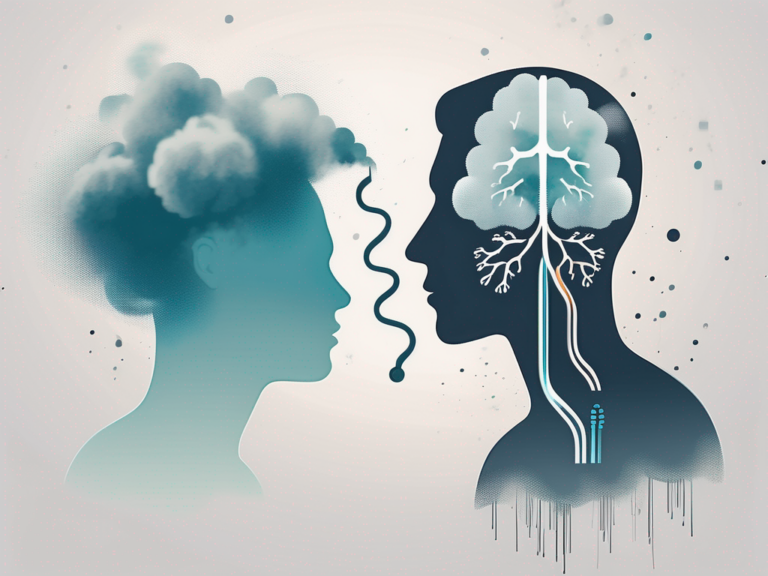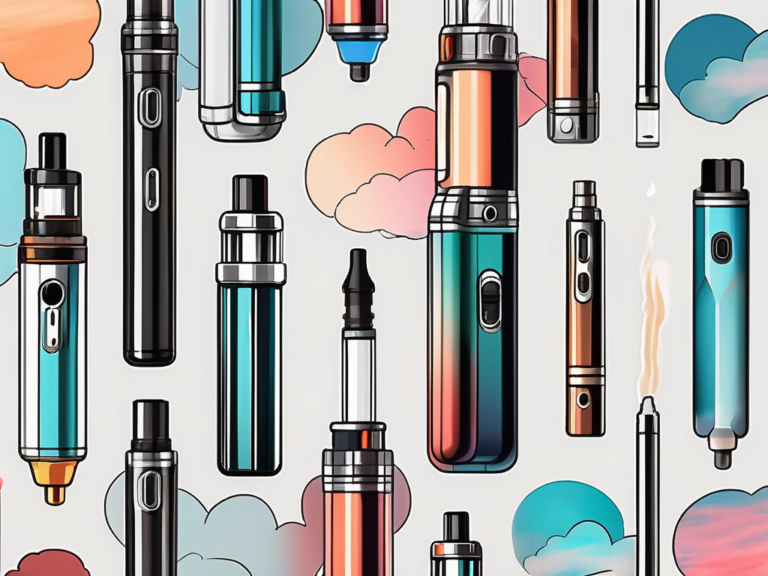how do vapes make you feel
Vaping has become a popular trend in recent years, captivating the attention of individuals from all walks of life. From curious teenagers to seasoned smokers looking for an alternative, people have flocked to this new way of inhaling nicotine. But have you ever wondered how vapes make you feel? In this article, we will explore the science behind vaping, the physical effects it has on the body, the psychological impact it may cause, and the social implications that come with this controversial habit.
Understanding Vaping and Its Popularity
Vaping, short for vaporizing, refers to the act of inhaling and exhaling an aerosol, often called vapor, produced by an electronic cigarette or similar device. This method of nicotine delivery has gained immense popularity in recent years, with vape shops popping up in every corner of the city. So what exactly is the reason behind this surge in popularity?
The Science Behind Vaping
Vaping involves heating a liquid, typically containing nicotine, along with various flavorings and other chemicals, to create an aerosol that users inhale. This liquid, also known as e-juice or vape juice, is usually comprised of propylene glycol, vegetable glycerin, nicotine, and flavorings. When the e-juice is heated, it turns into vapor, which is then inhaled into the lungs.
Unlike traditional cigarettes, which burn tobacco to create smoke, vapes utilize a process called atomization to produce a vapor that users inhale. This method eliminates the combustion process, reducing the number of harmful chemicals released into the air and potentially mitigating some of the negative health effects associated with smoking.
Furthermore, the customization options available in the vaping world have contributed to its popularity. Vapers can choose from a wide range of flavors, such as fruity, dessert, or even tobacco-inspired options. This variety allows users to tailor their vaping experience to their personal preferences, making it a more enjoyable and satisfying alternative to traditional smoking.
The Rise of Vaping Culture
Alongside the scientific aspects of vaping, its rise in popularity can also be attributed to the emergence of vaping culture. Vape enthusiasts gather in online forums and vape meet-ups to discuss new flavors, swap vaping techniques, and revel in their shared passion for this alternative nicotine delivery method. The sense of community that vaping culture fosters often contributes to the appeal and the sense of belonging that many individuals find themselves drawn to.
Moreover, the social aspect of vaping cannot be overlooked. Vape shops have become more than just retail spaces; they have transformed into social hubs where vapers can connect with like-minded individuals. These shops often host events, such as cloud-chasing competitions or flavor tastings, creating a vibrant and engaging atmosphere that further fuels the popularity of vaping.
Additionally, the aesthetic appeal of vaping devices has played a role in its widespread adoption. With sleek designs, vibrant colors, and innovative features, vaping devices have become fashion statements in their own right. Many vapers take pride in their collection of devices, showcasing them as accessories that reflect their personal style and taste.
In conclusion, the popularity of vaping can be attributed to a combination of factors. The scientific advancements that make vaping a potentially less harmful alternative to smoking, the wide array of flavors and customization options available, the sense of community and belonging within vaping culture, and the aesthetic appeal of vaping devices all contribute to its widespread appeal. As vaping continues to evolve, it will be interesting to see how this trend develops and how it shapes the future of nicotine consumption.
The Physical Effects of Vaping
When it comes to the physical effects of vaping, it’s important to understand that everyone’s experience may differ. Factors such as the vaper’s age, underlying health conditions, the type of e-juice used, and vaping habits can all influence the specific sensations and impacts experienced.
Immediate Sensations from Vaping
Many vapers describe a sensation of warmth and flavor upon inhaling the vapor, followed by a soothing exhale. The flavors available in e-juices range from fruity to decadent desserts, allowing users to indulge in a variety of tastes. Additionally, the nicotine in e-cigarettes may provide a stimulating effect, leading to increased alertness and focus for some individuals.
But let’s dive deeper into the immediate sensations experienced by vapers. Picture this: you take a puff from your favorite e-cigarette, and as the vapor enters your mouth, you’re greeted with the tantalizing taste of ripe strawberries, or perhaps the rich aroma of freshly brewed coffee. The warmth of the vapor fills your lungs, creating a comforting sensation that lingers for a moment before you exhale a cloud of billowing vapor. It’s a sensory experience that can be both satisfying and enjoyable.
However, it is worth noting that some individuals may experience throat irritation or coughing when first starting to vape. This side effect is typically temporary and can be minimized by gradually adjusting to the sensation. Think of it as your body’s way of acclimating to the new experience, much like how you might need time to adjust to a different climate or altitude.
Long-Term Physical Impacts
While vaping is often marketed as a safer alternative to smoking traditional cigarettes, it is important to acknowledge that the long-term effects of vaping are still largely unknown. Research is ongoing to determine the potential health risks associated with inhaling aerosols produced by e-cigarettes.
Now, let’s explore the long-term physical impacts of vaping. As with any emerging technology, it takes time to gather comprehensive data and draw conclusive findings. Some studies suggest that vaping can have negative effects on lung health, potentially leading to respiratory issues. However, it is essential to approach these findings with caution, as more research is needed to establish a clear understanding of the long-term consequences.
Researchers are diligently working to unravel the complexities of vaping and its potential impact on our bodies. They are examining the composition of e-juices, the effects of different vaping devices, and the long-term health outcomes of regular vapers. It is through these ongoing investigations that we will gain a more comprehensive understanding of the physical effects of vaping.
The Psychological Impact of Vaping
Beyond the physical effects, vaping can also have psychological implications for its users. The act of vaping is often intertwined with personal habits and routines, making it a behavior that can be difficult to break.
Vaping and Mood Changes
Some individuals report experiencing mood changes when vaping. The nicotine present in e-cigarettes has been linked to feelings of relaxation and stress reduction. However, it is vital to approach this aspect of vaping with caution, as nicotine is also known to be addictive. While it may provide temporary relief from stress or anxiety, it can contribute to dependence and potentially exacerbate existing mental health conditions.
Vaping and Stress Relief
For some individuals, vaping serves as a means of stress relief. The act of taking a deep breath and exhaling the vapor can provide a momentary distraction and relaxation. However, it is important to explore and utilize alternative, healthier methods of stress management that do not rely on nicotine or potentially harmful substances.
The Social Implications of Vaping
Aside from the personal experiences, vaping also carries social implications that can influence an individual’s perception of this habit.
Vaping and Peer Pressure
Like any trend, vaping has the potential to create a sense of peer pressure, especially among young individuals. The desire to fit in or be accepted by a particular group may lead some individuals to engage in vaping, even if they are not genuinely interested in the activity. It is essential to cultivate an environment where individual choices are respected, and pressure to engage in potentially harmful behaviors is discouraged.
Vaping as a Social Ritual
For others, vaping becomes a social ritual or an activity shared with friends and acquaintances. Just as individuals gather to smoke cigarettes or enjoy a cup of coffee together, vaping can provide a similar sense of camaraderie and shared experience. However, it is crucial to recognize the potential health risks associated with vaping and make informed decisions about one’s participation in these social rituals.
The Controversy Surrounding Vaping
Finally, let’s delve into the controversy surrounding vaping, particularly in the realm of health concerns and regulations.
Health Concerns and Vaping
The long-term effects of vaping on human health are still a subject of debate among scientists and health professionals. While some studies have raised concerns about the potential risks associated with vaping, such as lung damage or cardiovascular issues, clear conclusions have yet to be reached. It is essential to stay informed about the latest research and make decisions about vaping based on reliable and evidence-based information.
The Debate on Vaping Regulations
Vaping regulations have become a hot topic in many countries and regions. Some argue for stricter regulations to protect public health, particularly in relation to youth vaping rates and advertising practices. Others advocate for a more balanced approach that weighs the potential benefits of vaping as a smoking cessation tool against the risks it may pose. Finding a middle ground that ensures adequate consumer protection while acknowledging personal freedoms remains a challenge for lawmakers and regulators worldwide.
In conclusion, the question of how vapes make you feel is complex and multifaceted. Vaping can provide immediate sensations and potentially influence an individual’s mood, but it also carries physical, psychological, and social implications. As the popularity of vaping continues to rise, it is crucial for individuals to approach this habit with caution, consider the potential risks and benefits, and make informed decisions that align with their personal well-being.






